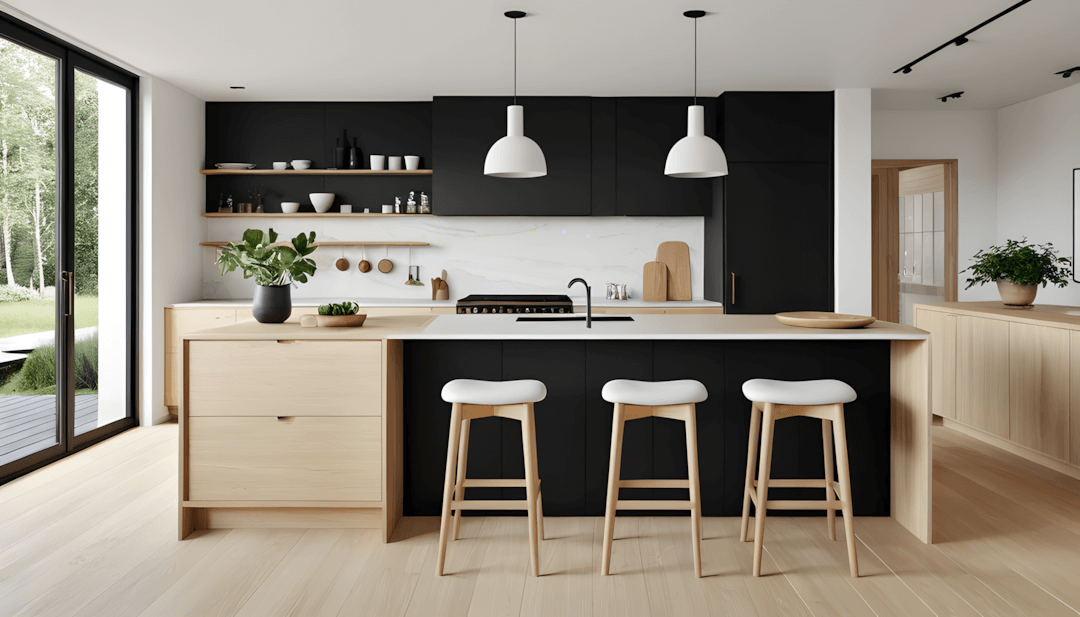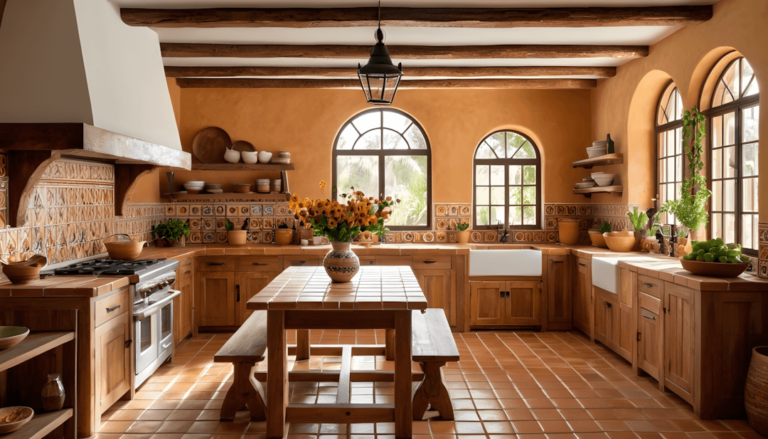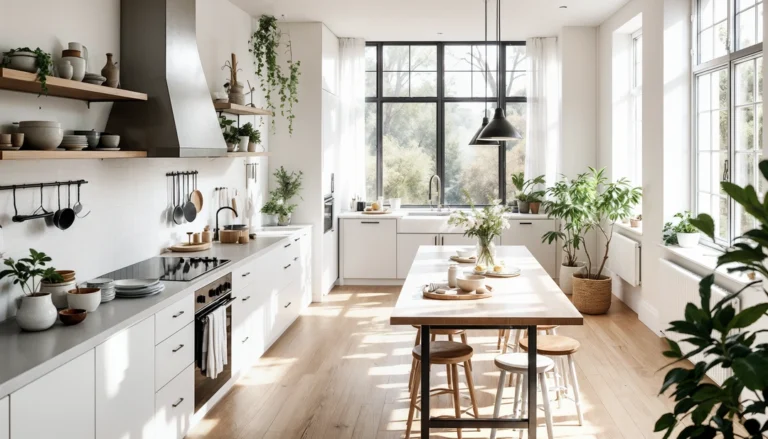In my experience working with homeowners on Scandinavian-inspired kitchen renovations, I’ve observed that this design approach often creates remarkably calming and efficient cooking environments. Through various projects, I’ve learned that Nordic kitchen style typically combines minimalist aesthetics, natural materials, and thoughtful functionality while maintaining an atmosphere that feels both sophisticated and genuinely practical for daily use.
Note: For any structural modifications, electrical work, plumbing, or installations mentioned in this article, always consult with licensed professionals to ensure safety and code compliance.
What makes Scandinavian kitchen design particularly appealing to many homeowners is its emphasis on creating spaces that prioritize both beauty and everyday functionality. I’ve found that people often choose this approach because it typically promotes a sense of calm organization while accommodating busy family lifestyles and modern cooking needs.
The key to successful Scandinavian-inspired kitchen design often lies in balancing clean simplicity with warm, natural elements. Effective Nordic kitchens typically embrace neutral palettes, quality materials, and streamlined storage while incorporating organic textures that prevent spaces from feeling cold or sterile.
Here are 16 approaches for Scandinavian-inspired kitchens that often work well in different home settings, based on observations from various minimalist design projects.
1. Bright White Foundation
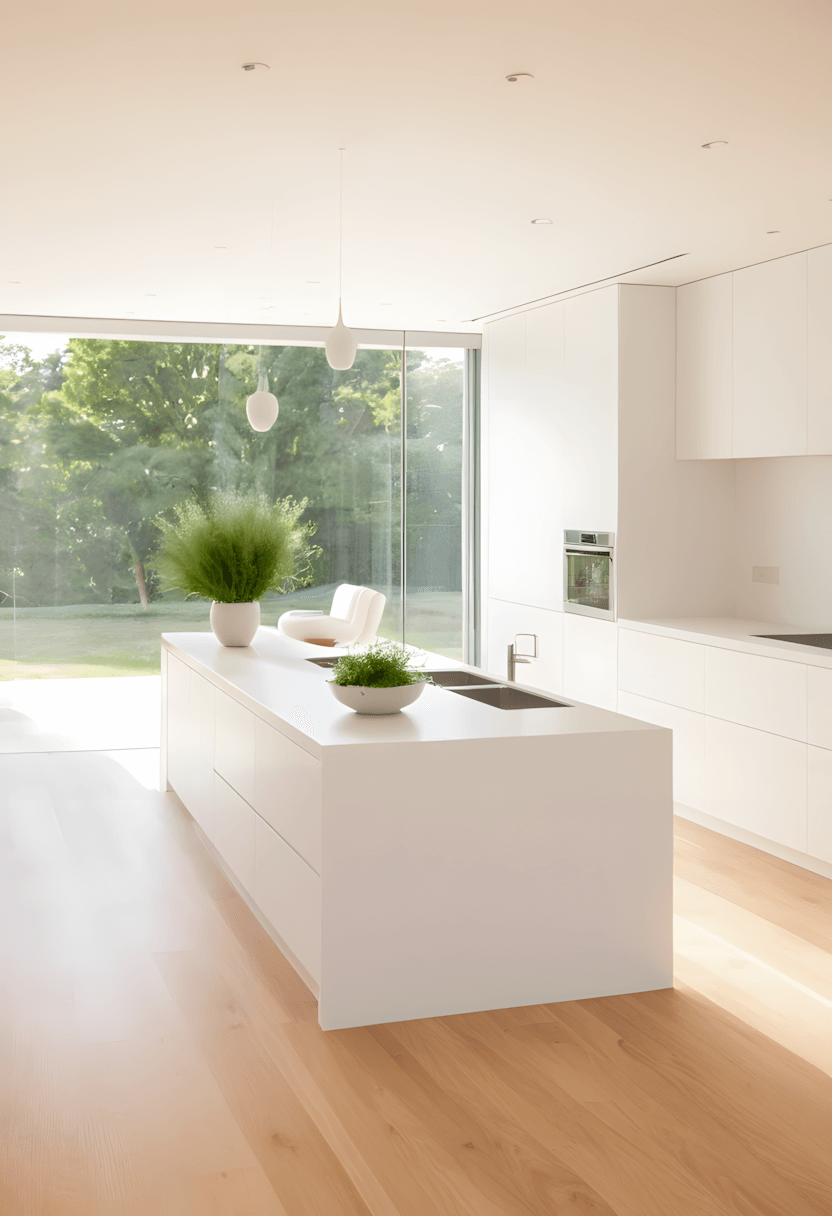
This color approach often appeals to homeowners seeking to maximize light and create spacious feelings in their kitchens. White surfaces typically reflect available light while providing a clean, serene backdrop for cooking activities.
Design consideration: White kitchens often require careful attention to texture and material variation to prevent the space from appearing flat or sterile.
Practical benefit: Light colors typically show fewer fingerprints and water spots while making small kitchens appear larger and more open than they actually are.
2. Natural Wood Integration
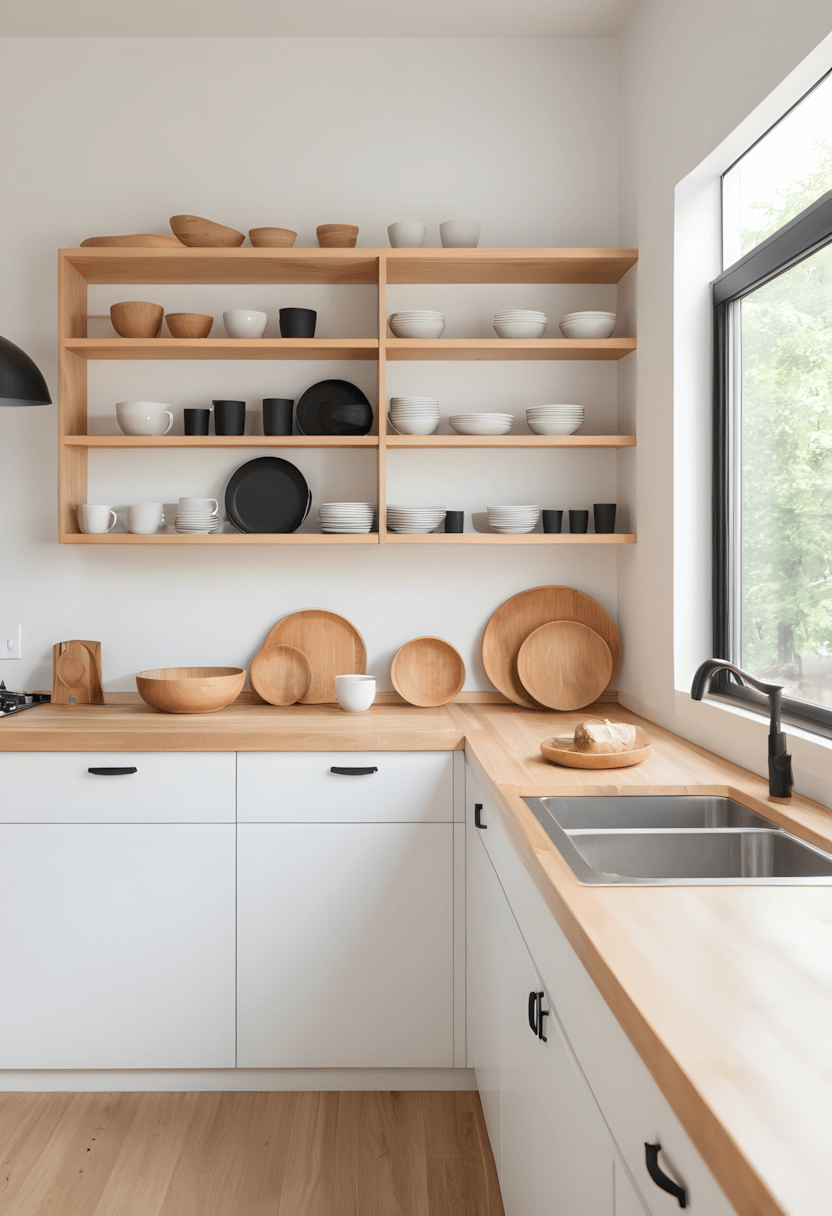
This material choice often appeals to those wanting warmth within minimalist spaces. Wood elements typically add organic texture and visual interest while maintaining the clean aesthetic characteristic of Scandinavian design.
Design consideration: Light wood tones often complement white surfaces while providing necessary visual warmth that makes kitchens feel more inviting and livable.
Practical benefit: Quality wood surfaces typically develop beautiful patina over time while offering durability that justifies the investment in kitchen renovations.
3. Matte Black Accent Features
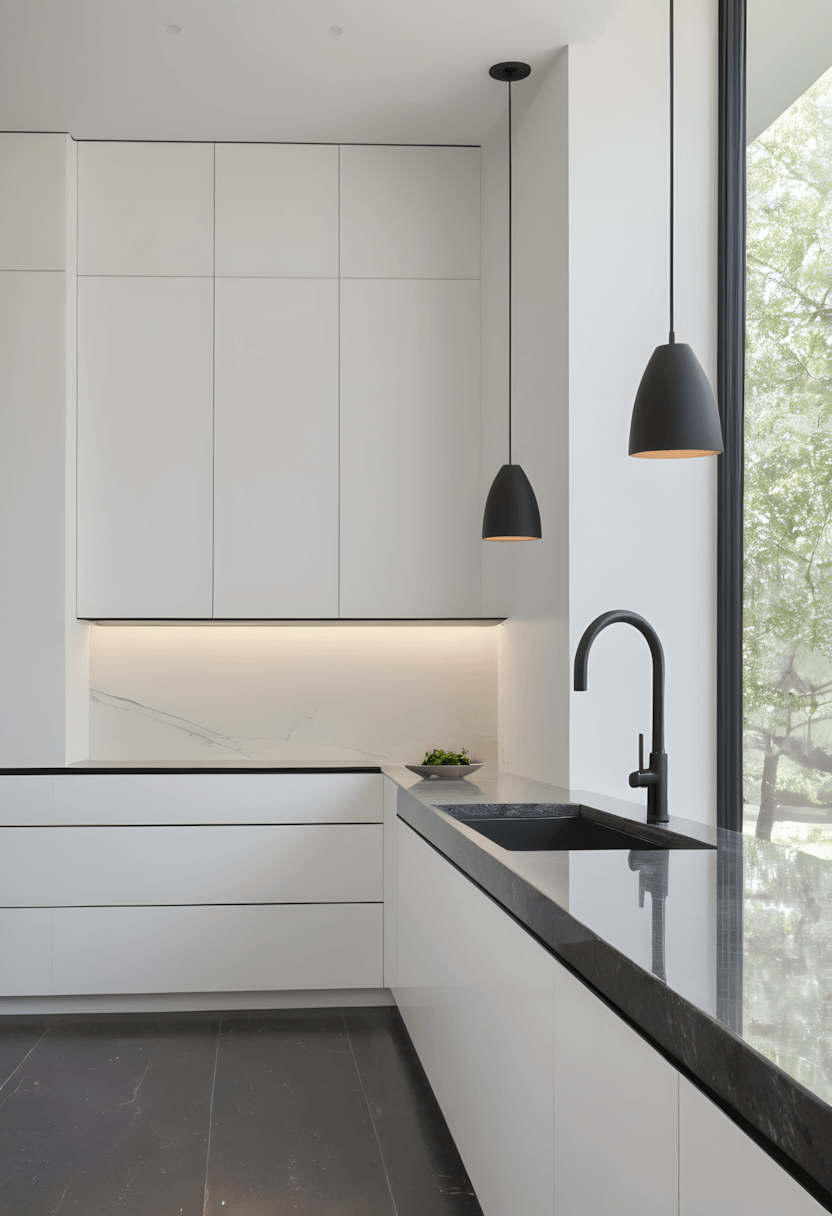
This contrast technique often appeals to homeowners wanting sophisticated depth in neutral spaces. Dark fixtures and hardware typically provide necessary visual anchors while adding contemporary elegance to predominantly light palettes.
Design consideration: Black accents often create striking focal points while preventing Scandinavian kitchens from appearing too ethereal or lacking in definition.
Practical benefit: Dark finishes typically hide wear and fingerprints better than lighter alternatives while providing timeless contrast that doesn’t quickly become outdated.
4. Soft Color Introduction
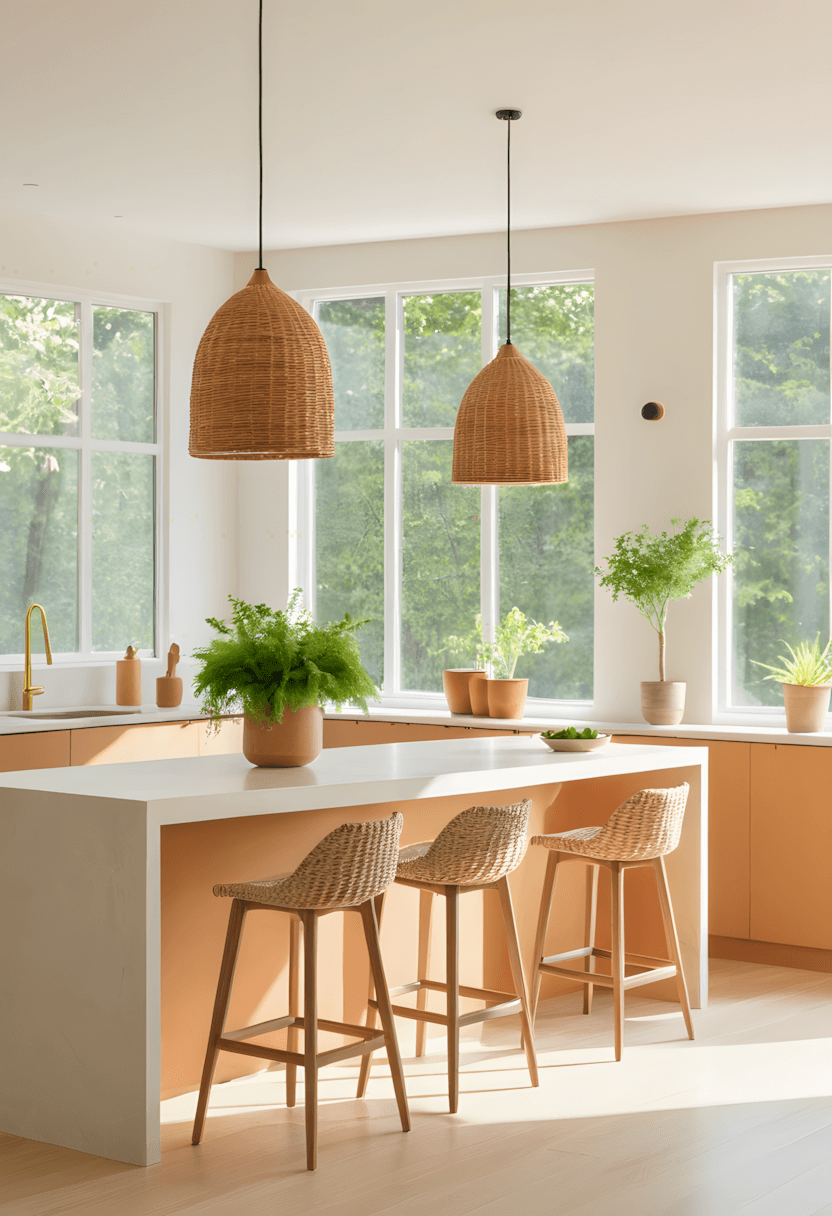
This approach often appeals to those wanting personality within Nordic simplicity. Subtle color accents typically add visual interest while maintaining the calm foundation characteristic of Scandinavian aesthetics.
Design consideration: Muted tones often provide flexibility for seasonal changes while maintaining the serene atmosphere that defines Nordic design philosophy.
Practical benefit: Small color accents typically allow for affordable updates while providing opportunities to reflect personal style within the minimalist framework.
5. Streamlined Cabinet Solutions
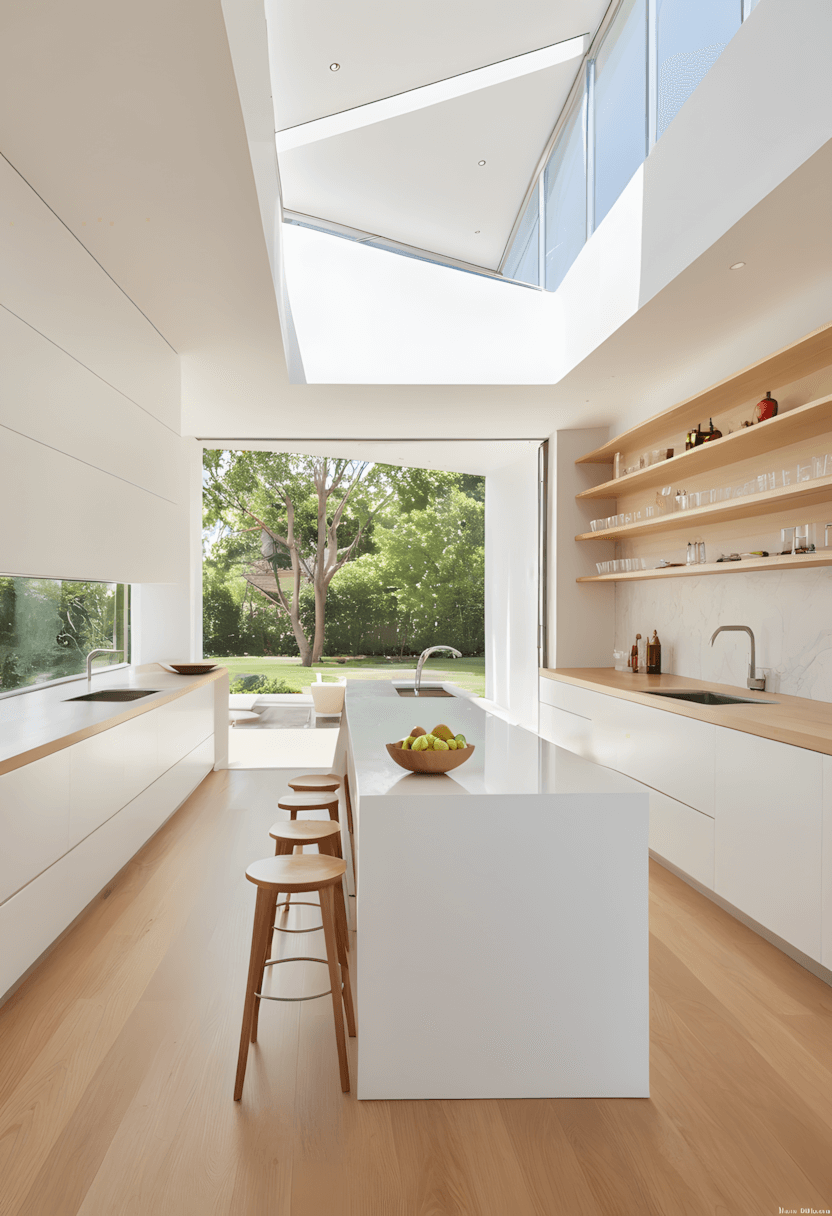
This storage approach often appeals to homeowners prioritizing clean lines and uncluttered surfaces. Handleless cabinets typically maintain visual simplicity while offering modern convenience through push-to-open mechanisms.
Design consideration: Smooth cabinet fronts often create seamless visual flow while reducing visual noise that can make kitchens feel busy or chaotic.
Practical benefit: Integrated cabinet systems typically offer easier cleaning while providing sleek functionality that supports the organized Nordic lifestyle.
6. Natural Stone Surfaces
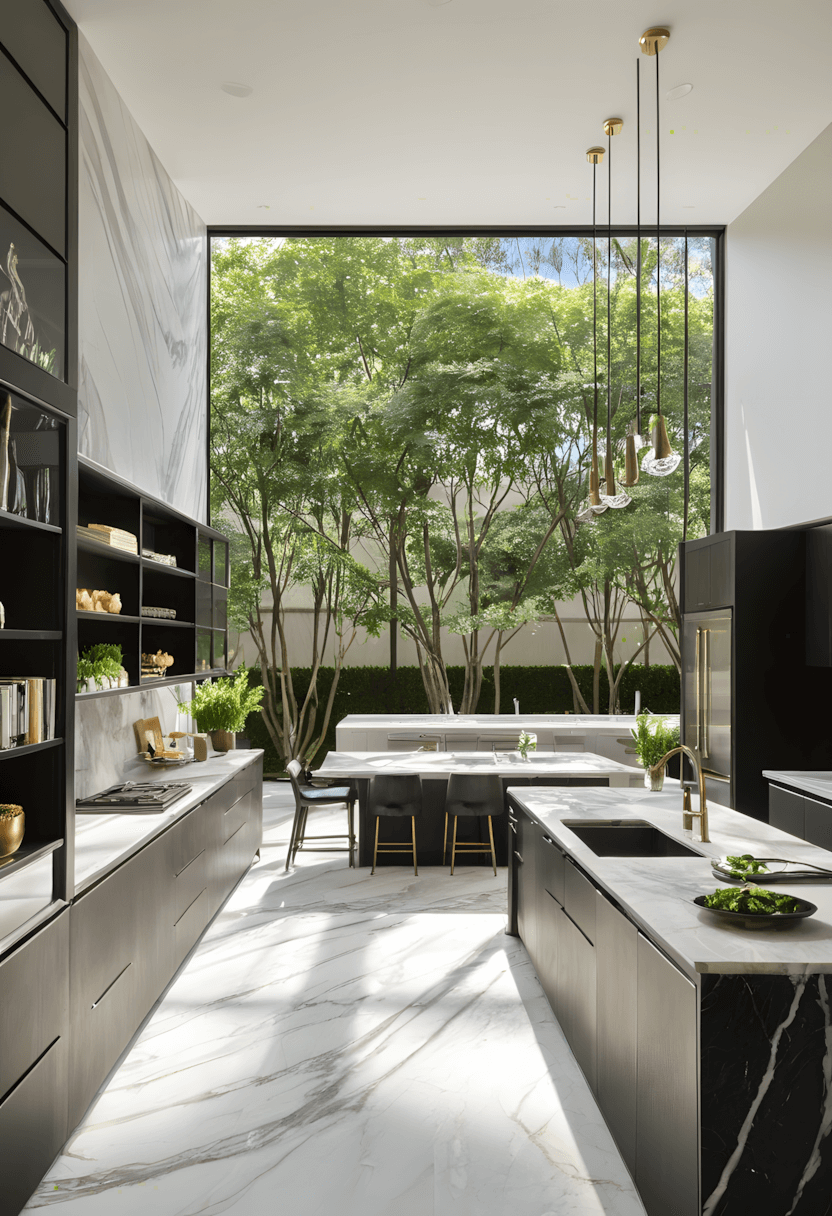
This material choice often appeals to those seeking luxury within minimalist frameworks. Marble and similar stones typically provide sophisticated surfaces while offering the natural variation that prevents uniformity from becoming monotonous.
Design consideration: Natural stone veining often adds subtle visual movement while providing necessary texture contrast against smooth cabinet surfaces.
Practical benefit: Quality stone surfaces typically offer excellent durability for food preparation while developing character that enhances rather than detracts from their appearance.
7. Minimalist Lighting Design
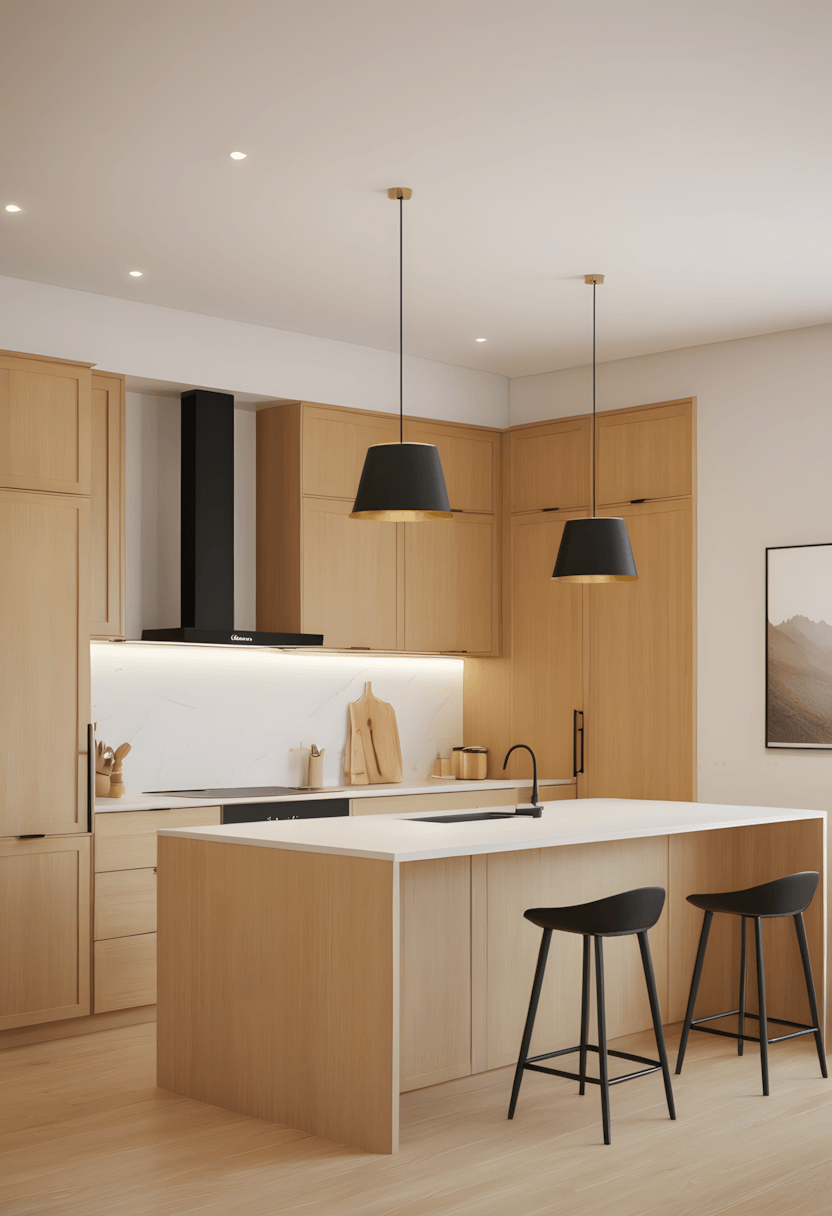
This illumination approach often appeals to homeowners wanting both function and aesthetic appeal. Simple lighting fixtures typically provide necessary task lighting while serving as subtle design elements that support the overall aesthetic.
Design consideration: Clean-lined fixtures often complement architectural simplicity while providing adequate lighting for both cooking tasks and ambient atmosphere.
Practical benefit: Quality minimalist lighting typically offers long-term durability while providing flexibility to update bulb technology as energy efficiency improves.
8. Geometric Tile Applications
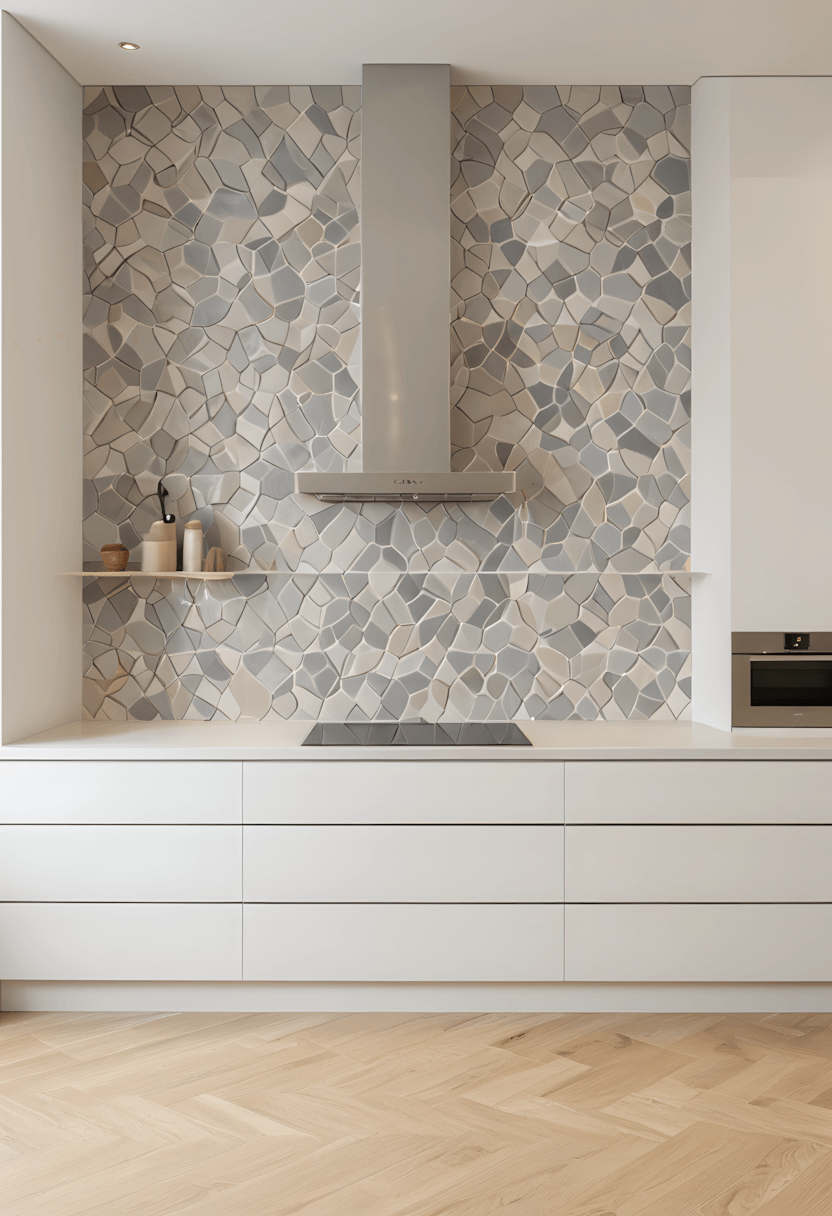
This surface treatment often appeals to those wanting visual interest within simple palettes. Geometric patterns typically add subtle complexity while maintaining the clean aesthetic essential to Scandinavian design.
Design consideration: Simple tile patterns often create rhythm and movement while providing practical, easy-to-clean surfaces for cooking areas.
Practical benefit: Quality tiles typically withstand kitchen moisture and heat while offering long-term durability that justifies the initial investment.
9. Functional Island Integration
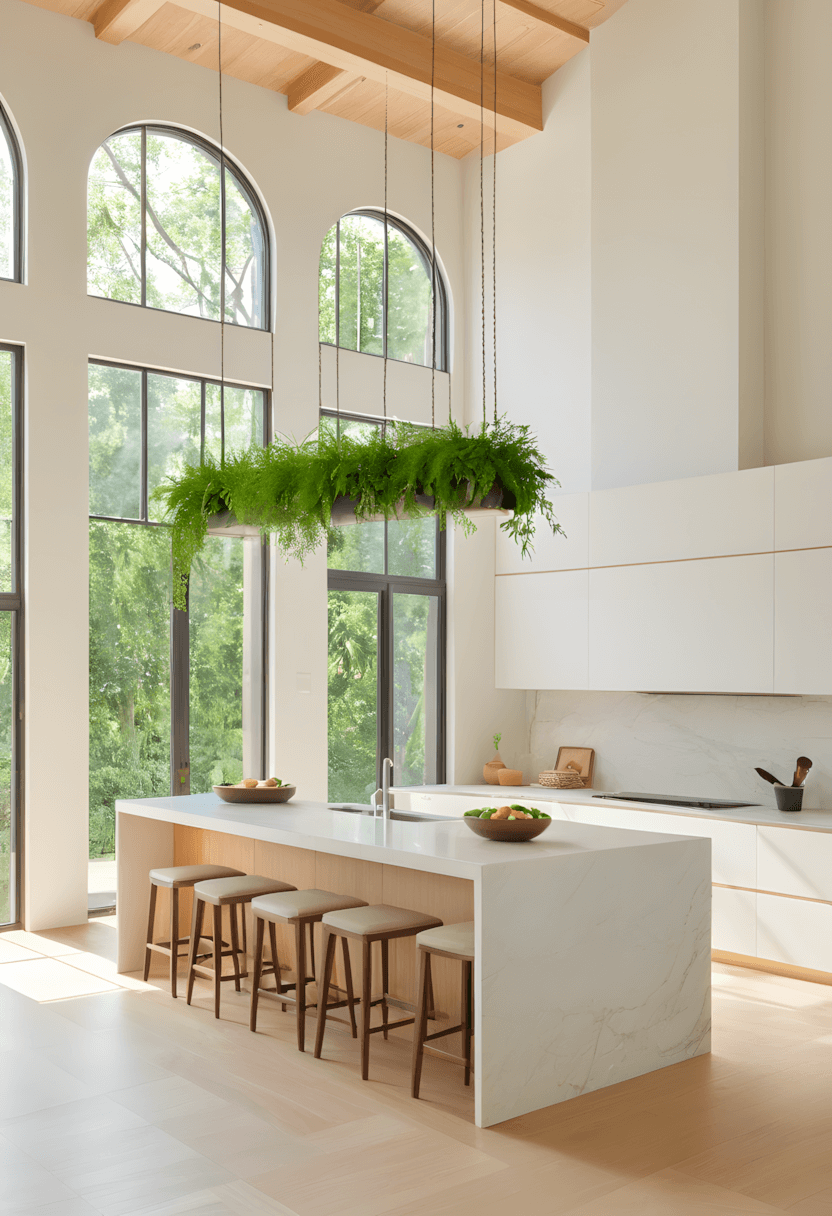
This layout approach often appeals to modern families seeking both workspace and gathering areas. Kitchen islands typically provide additional storage and preparation space while creating natural conversation areas for family interaction.
Design consideration: Island placement often improves kitchen traffic flow while providing opportunities to incorporate contrasting materials or additional storage solutions.
Practical benefit: Well-designed islands typically increase property value while offering flexible space for both cooking tasks and casual dining needs.
10. Efficient Layout Solutions
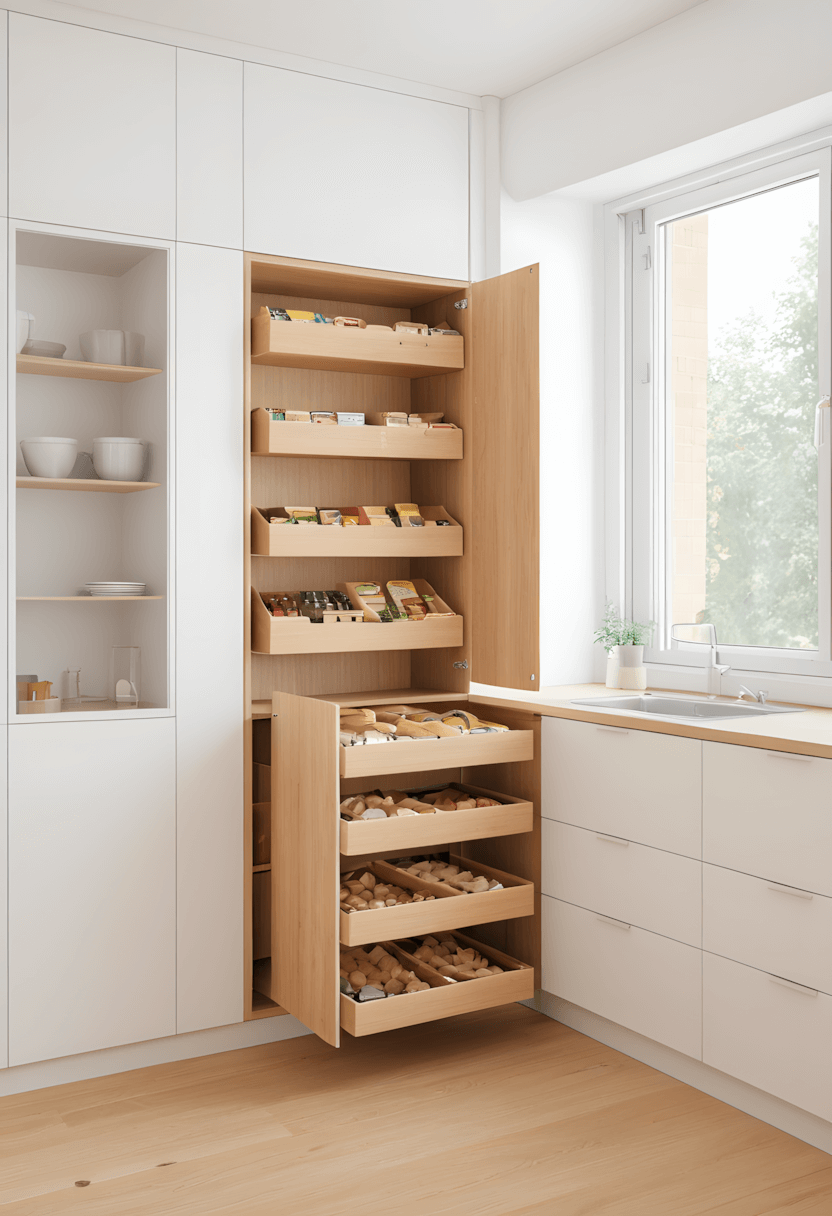
This spatial approach often appeals to homeowners maximizing smaller kitchen spaces. Thoughtful storage solutions typically maintain the uncluttered aesthetic while accommodating all necessary kitchen functions and equipment.
Design consideration: Vertical storage often maximizes available space while hidden solutions maintain the clean lines essential to Nordic design philosophy.
Practical benefit: Efficient layouts typically improve cooking workflow while reducing time spent on kitchen organization and maintenance tasks.
11. Industrial Material Accents
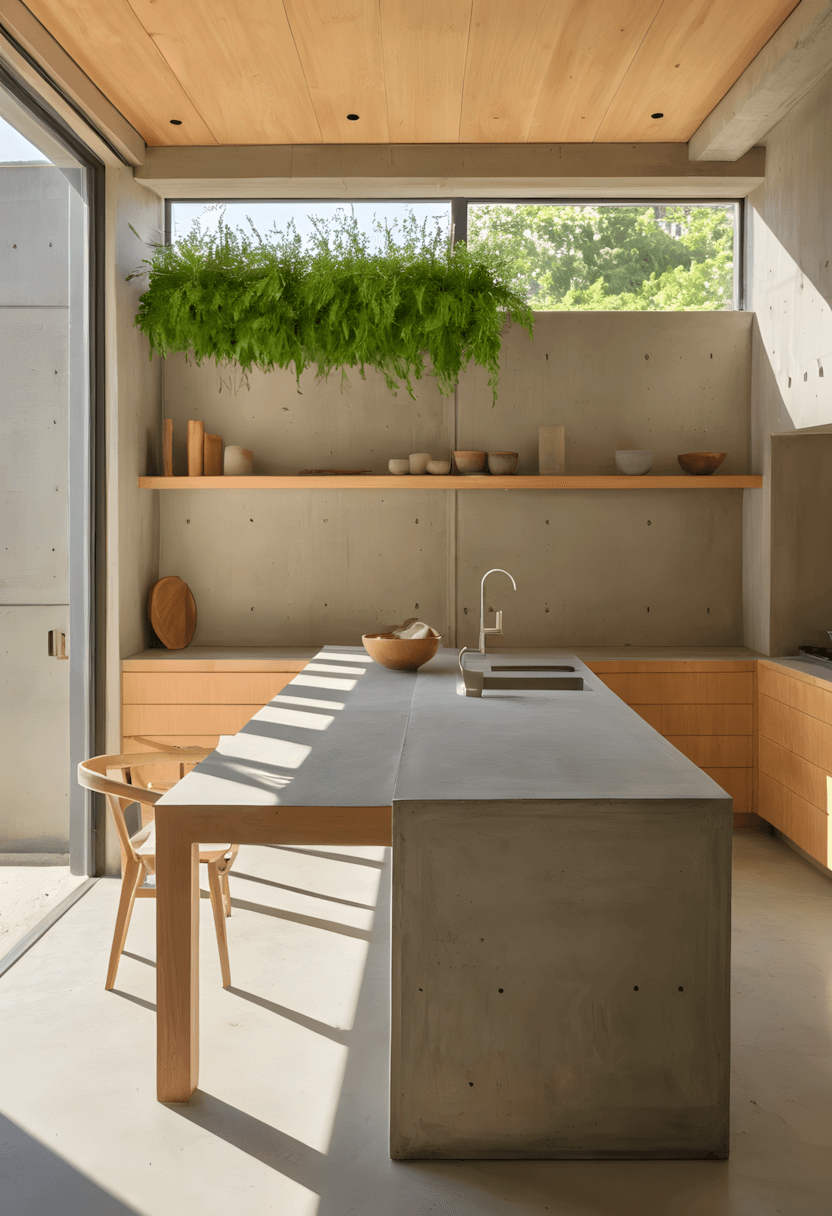
This texture approach often appeals to those wanting contemporary edge within Nordic simplicity. Concrete elements typically add urban sophistication while maintaining the natural material philosophy characteristic of Scandinavian design.
Design consideration: Concrete’s smooth finish often provides interesting contrast with wood textures while maintaining the neutral palette that defines Nordic aesthetics.
Practical benefit: Concrete surfaces typically offer exceptional durability while requiring minimal maintenance beyond occasional sealing and regular cleaning.
12. Integrated Dining Solutions
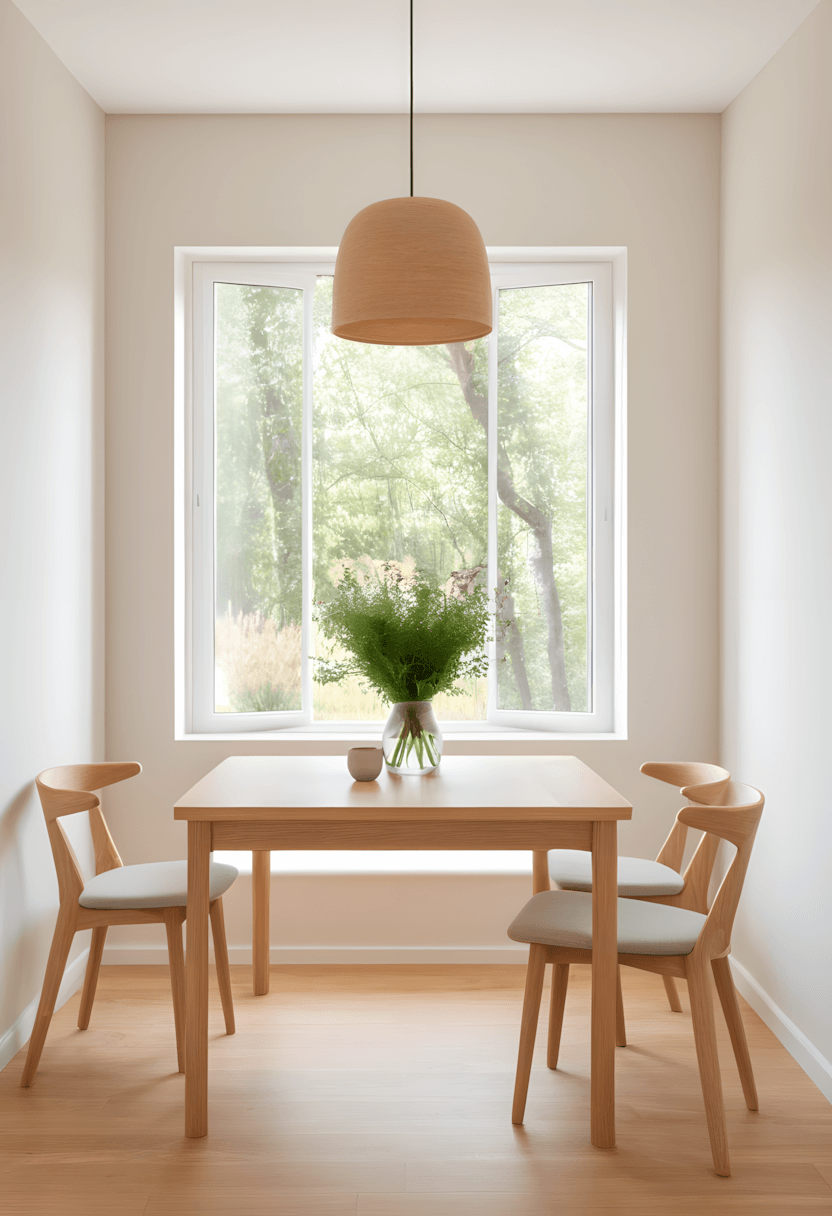
This spatial approach often appeals to families wanting connected living areas. Built-in dining nooks typically create intimate gathering spaces while maintaining the open, flowing feel characteristic of Nordic homes.
Design consideration: Dining integration often maximizes space efficiency while providing opportunities for comfortable seating that doesn’t interfere with cooking activities.
Practical benefit: Combined kitchen-dining areas typically improve family interaction while offering flexibility for both everyday meals and entertaining guests.
13. Textural Wall Elements
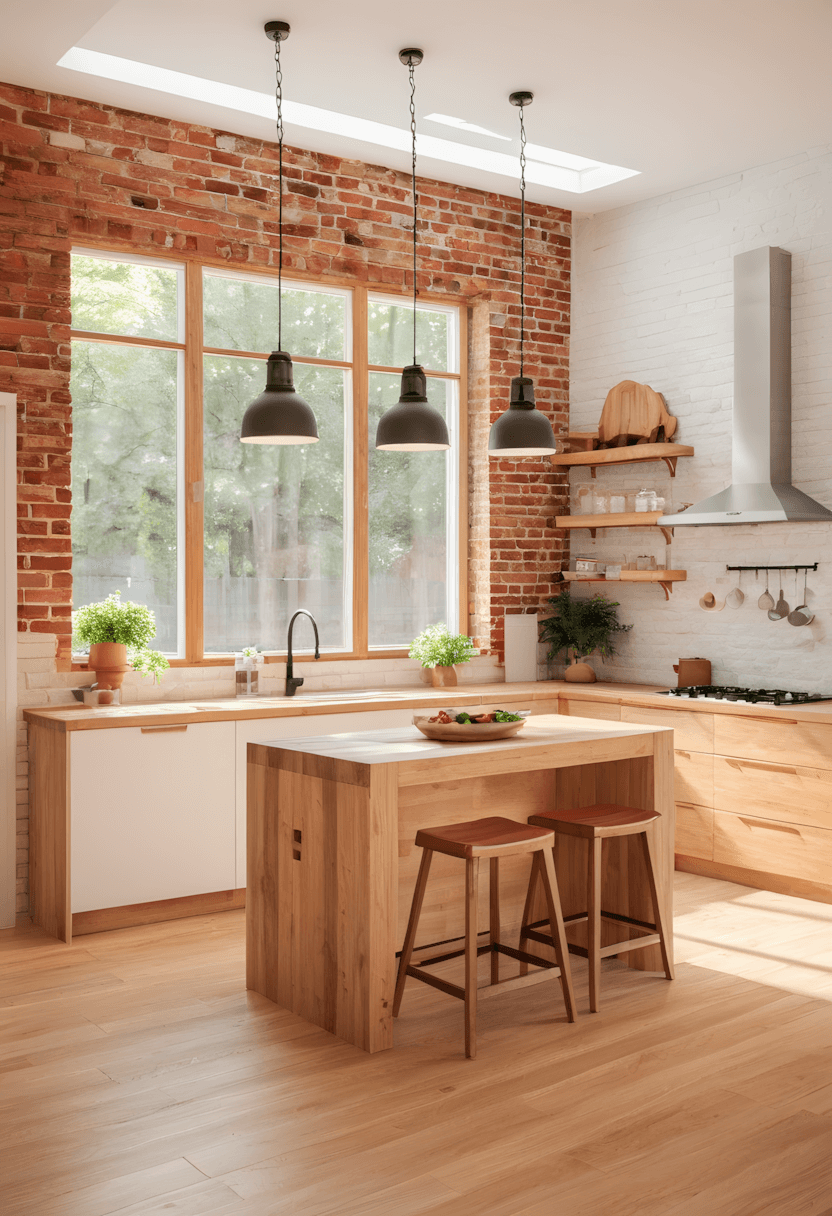
This design approach often appeals to homeowners wanting authentic character within clean spaces. Exposed brick or similar materials typically add warmth and texture while maintaining the neutral palette essential to Scandinavian aesthetics.
Design consideration: Natural wall textures often prevent minimalist spaces from feeling cold while adding visual interest that doesn’t compete with functional elements.
Practical benefit: Authentic materials typically age beautifully while requiring minimal maintenance beyond occasional cleaning and protective treatments.
14. Matte Finish Cabinetry
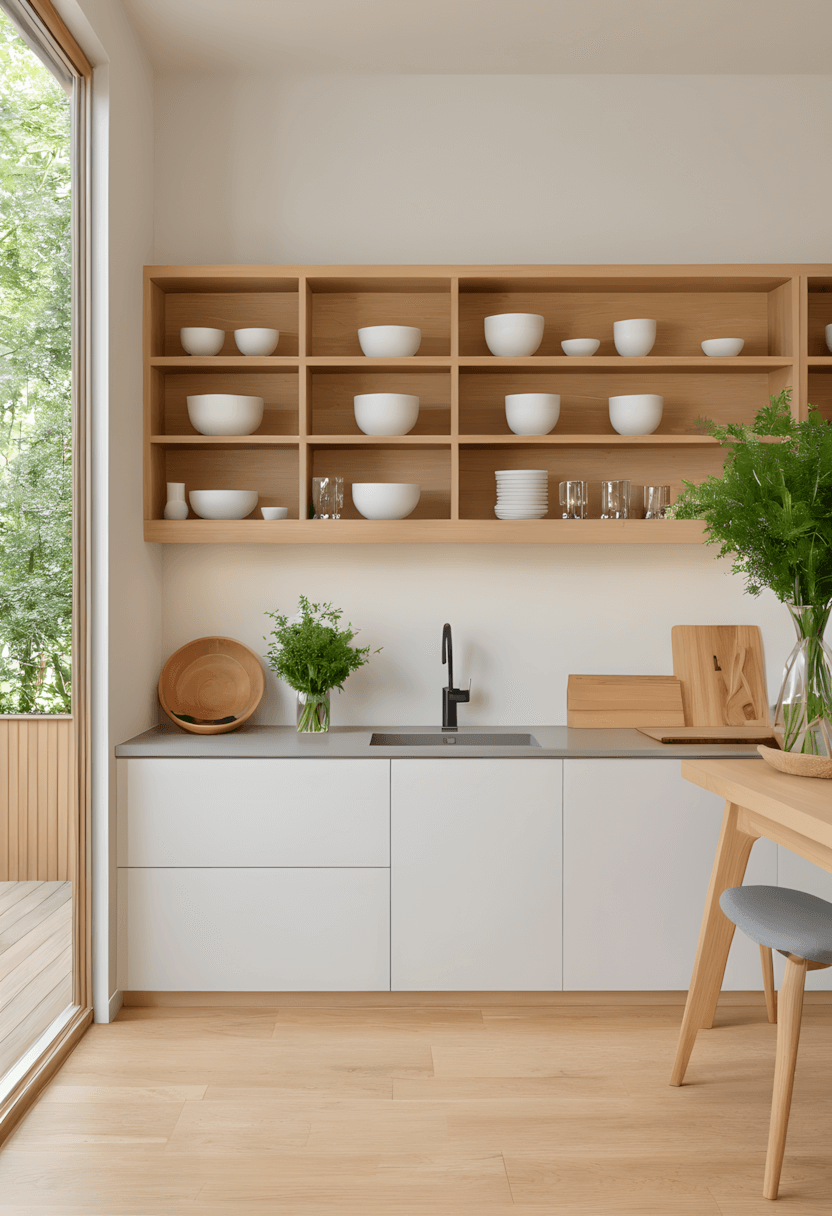
This surface treatment often appeals to those preferring sophisticated subtlety over high shine. Matte cabinet finishes typically provide elegant durability while maintaining the understated aesthetic characteristic of Nordic design.
Design consideration: Matte surfaces often hide fingerprints and wear marks better than glossy alternatives while providing sophisticated color depth and richness.
Practical benefit: Quality matte finishes typically offer excellent durability while providing easier touch-up capabilities when minor wear occurs over time.
15. Light Wood Flooring
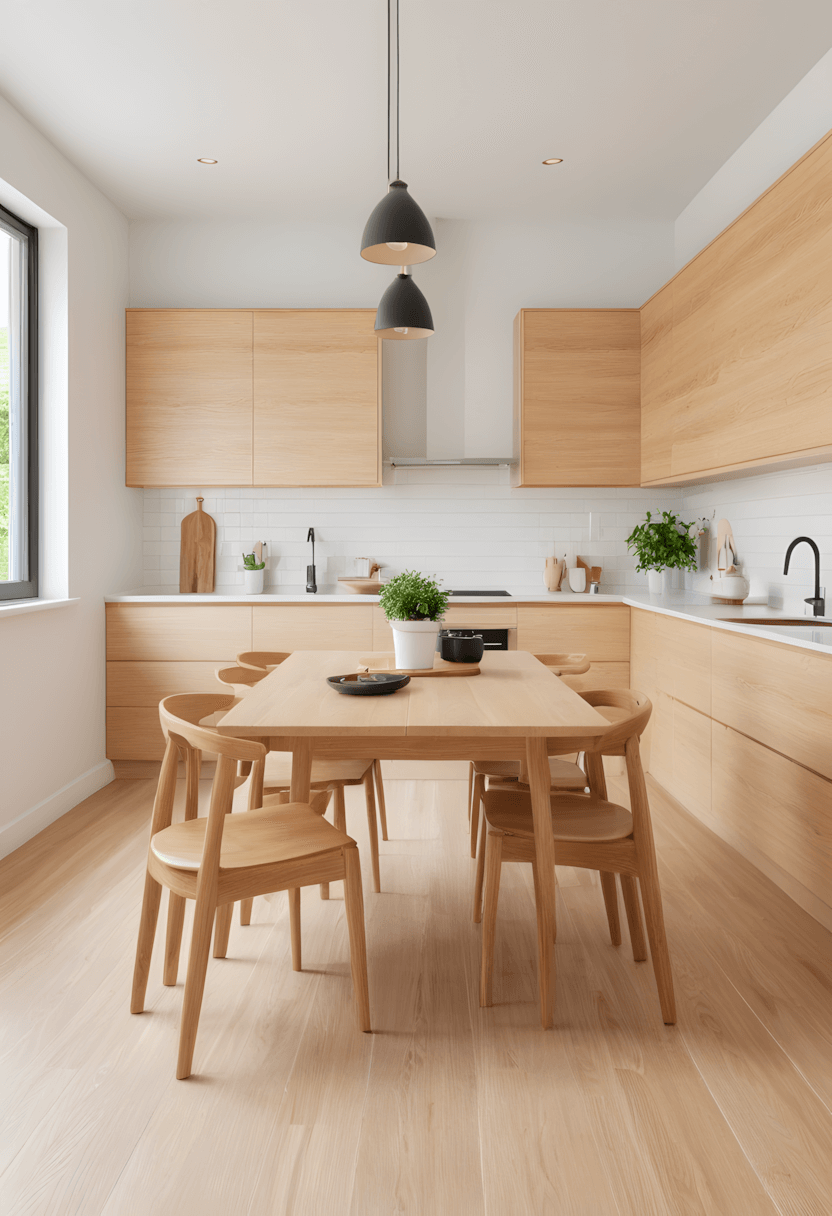
This foundation choice often appeals to homeowners wanting to enhance natural light and create cohesive flow. Light wooden floors typically reflect available light while providing warm, natural texture underfoot.
Design consideration: Pale wood tones often create visual continuity with other Nordic elements while providing necessary warmth that prevents spaces from feeling sterile.
Practical benefit: Light hardwood typically shows dust and debris less obviously than dark alternatives while offering excellent durability for high-traffic kitchen areas.
16. Minimalist Seating Solutions
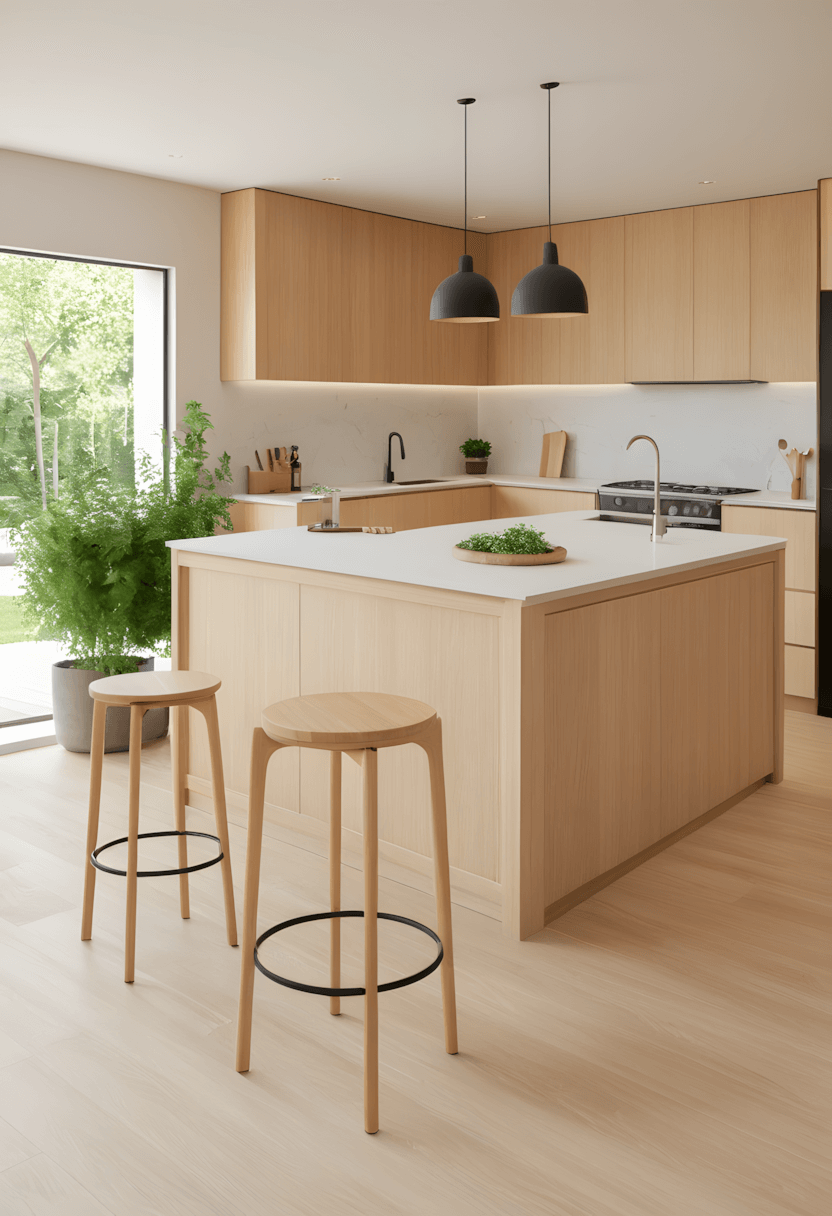
This furniture approach often appeals to those wanting function without visual clutter. Simple bar stools and seating typically provide necessary functionality while maintaining the clean lines essential to Scandinavian aesthetics.
Design consideration: Low-profile seating often maintains sight lines while providing comfortable options that don’t overwhelm smaller kitchen spaces.
Practical benefit: Quality minimalist seating typically offers easy maintenance while providing flexibility to rearrange spaces as entertaining needs change.
Creating Your Scandinavian Kitchen Haven
Through various Nordic-inspired kitchen projects, I’ve observed that successful Scandinavian kitchens often balance multiple elements: the serenity of neutral palettes, the warmth of natural materials, and the efficiency of thoughtful storage solutions. These spaces typically succeed because they prioritize both aesthetic beauty and practical functionality for busy family life.
The Scandinavian approach often works well for modern homeowners because it typically creates environments that feel both sophisticated and genuinely livable. Effective implementation usually involves starting with foundational elements like cabinetry and flooring, then layering in natural textures, efficient lighting, and streamlined storage solutions that support daily cooking routines.
Planning considerations often include assessing your kitchen’s natural light, existing plumbing and electrical locations, and budget allocation between major elements like cabinetry versus smaller details like hardware and lighting. Many successful projects prioritize quality materials in key areas while finding cost-effective solutions for accent elements that can be updated over time.
Remember: For any electrical work, plumbing modifications, structural changes, or built-in installations related to lighting, appliances, or cabinetry, always consult with licensed professionals to ensure proper installation and code compliance.

